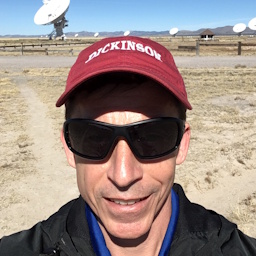Speed test of 'tunneling' electrons challenges alternative interpretation of quantum mechanics

Charles Blue
contributing writer

Gaby Clark
scientific editor

Robert Egan
associate editor

Quantum mechanics describes the unconventional properties of subatomic particles, like their ability to exist in a superposition of multiple states, as popularized by the Schrödinger's cat analogy, and ability to slip through barriers, a phenomenon known as quantum tunneling.
Reporting in the journal , a team of researchers tested a unique aspect of Bohmian mechanics, an alternative interpretation of quantum theory. This twist on classical quantum theory predicts that a tunneling quantum particle would remain "at rest" inside an infinitely long barrier. The time it spends inside the barrier, called dwell time, would therefore be infinite.
In the classic "Copenhagen" interpretation of quantum physics, photons and other subatomic particles exist as waves of probabilities with no defined location until they are observed. At that point, a particle's waveform collapses into a discrete particle with a definite location, as demonstrated by the famous double-slit experiment.
The alternate Bohmian interpretation posits that particles remain point-like objects. In this model, the positions of particles are determined by some unmeasured "hidden" variables and their trajectories are guided by a pilot wave, which gives the appearance of wave-particle duality.

Both interpretations make many of the same predictions, but they differ greatly in the way they describe the fundamental nature of particles.
To test the unique prediction of Bohmian mechanics that photons can, in effect, remain frozen in time when tunneling through a barrier of infinite length, the researchers designed an experiment that, to a photon, would simulate an infinitely long barrier.
The setup was constructed by sandwiching together a pair of specially designed mirrors. The lower mirror was etched with a nanoscale ramp and a pair of parallel waveguides. By shining a laser on the ramp, the researcher could produce photons and control their momentum.
As the photons traveled along the waveguide and tunneled into the barrier, they also tunneled into the secondary waveguide, jumping back and forth between the two at a consistent rate, allowing the research team to calculate their speed.
By combining this element of time with measurements of the photon's rate of decay inside the barrier, the researchers were able to calculate dwell time, which was found to be finite.
The researchers write, "Our findings contribute to the ongoing tunneling time debate and can be viewed as a test of Bohmian trajectories in quantum mechanics. Regarding the latter, we find that the measured energy–speed relationship does not align with the particle dynamics postulated by the guiding equation in Bohmian mechanics."
This result challenges but does not rule out the Bohmian prediction. Since the researchers' experiment was an analog that relied on various assumptions, its findings are not conclusive and may themselves be challenged.
Written for you by our author , edited by , and fact-checked and reviewed by —this article is the result of careful human work. We rely on readers like you to keep independent science journalism alive. If this reporting matters to you, please consider a (especially monthly). You'll get an ad-free account as a thank-you.
More information: Violetta Sharoglazova et al, Energy–speed relationship of quantum particles challenges Bohmian mechanics, Nature (2025).
N&V: Tunnelling photons challenge interpretation of quantum mechanics, Nature (2025).
Journal information: Nature
© 2025 Science X Network





















